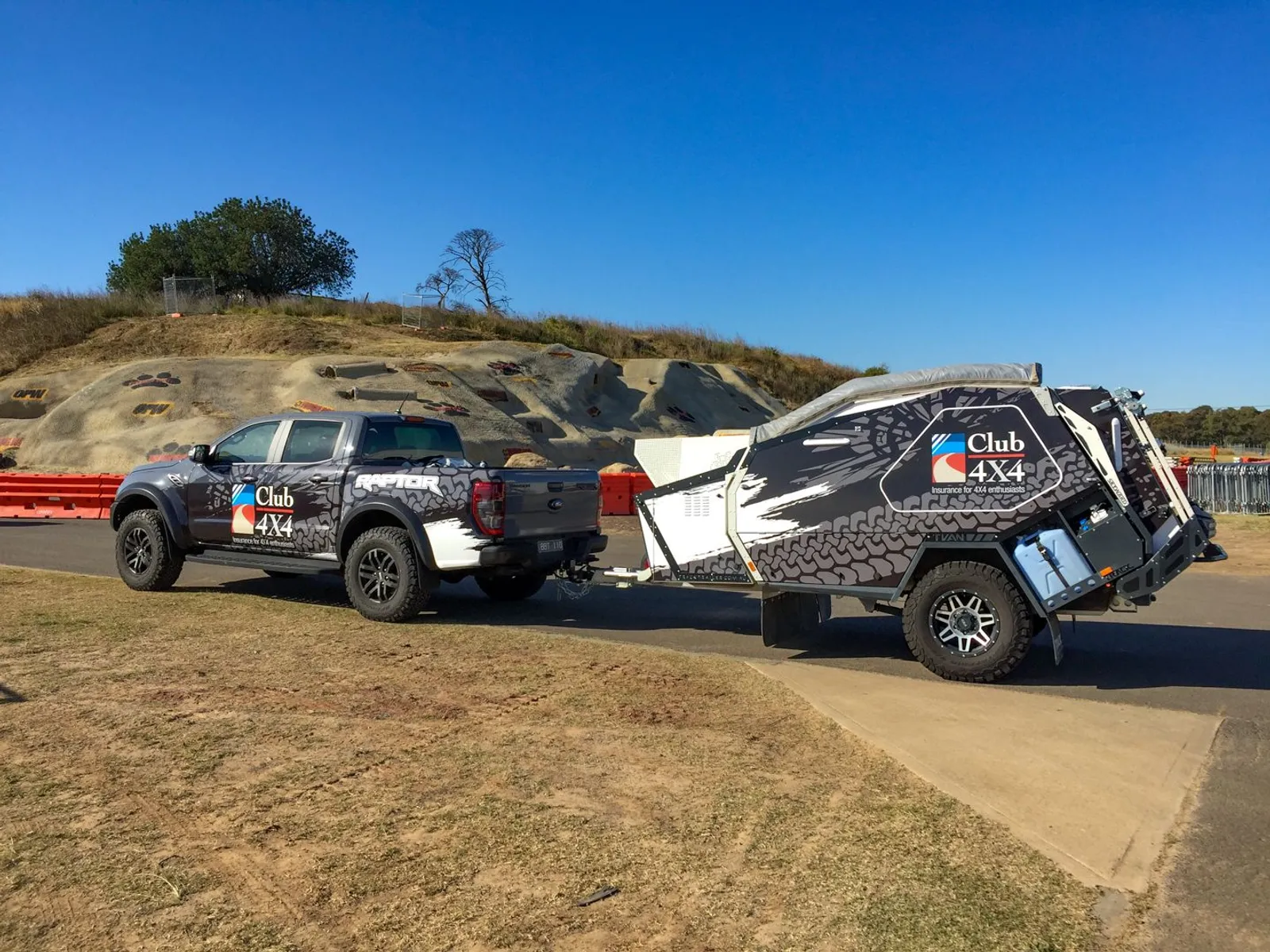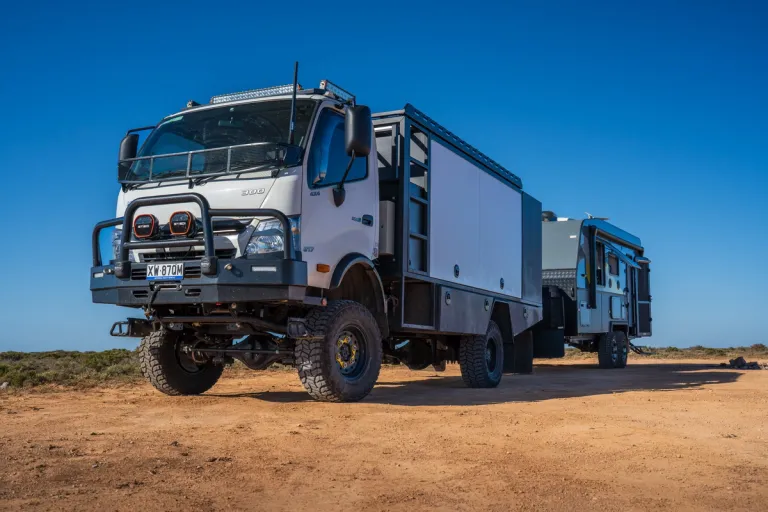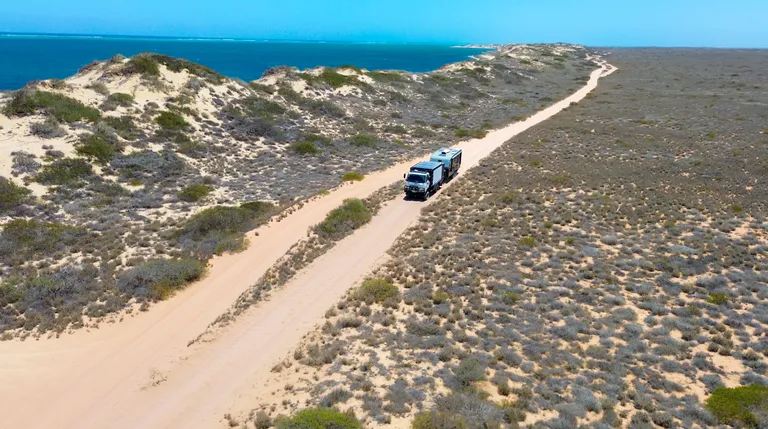There has been a lot of discussion / criticism about the towing ability of the Ford Ranger Raptor because of the reduced towing capacity specified by the manufacturer over the rest of the Ranger range.
I’ve towed 1500KG with the Raptor for a combined distance of over 1,000km in the last month. And I’ve towed the same weight with a 3.2L Ford Ranger XLT, which gives me a good understanding of how the Raptor performs vs the traditional leaf sprung ute.
Here’s what I found personally when towing with the Raptor.
What I towed for the test
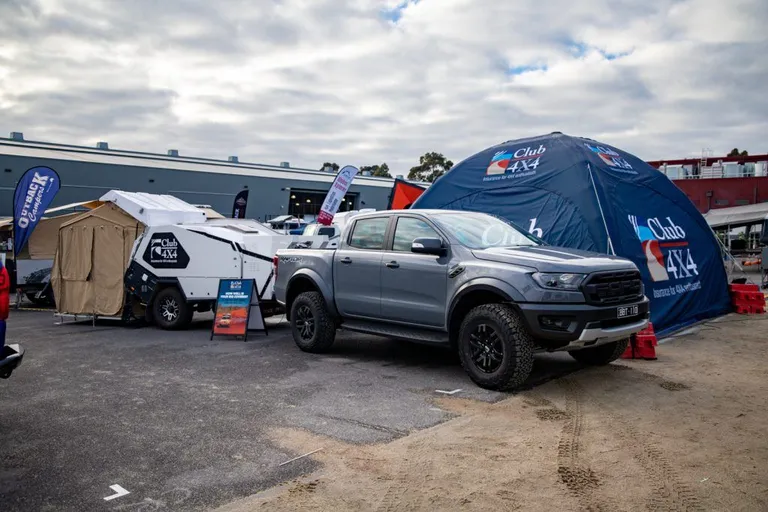
The Raptor and Track Trailer Tvan (at the Melbourne Show)
For the test, I towed a 2019 Track Trailer T-Van Mk5, which was loaded with equipment for us to exhibit at a range of shows around Sydney. It would have been close to GTM of 1,500KG based on my calculations.
I also had personal gear in the Raptor, weighing approximately 100KG.
The type of driving done
For this towing test, I covered over 1,000km in the Raptor. All travel done was on-road, or on graded unsealed roads. My reflections will compare the experience to that of a 1,000km drive in a Ford Ranger XLT with the 3.2L.
Starting with the numbers
The Ford Ranger Raptor has the following specs:
GCM 5350 KG
GVM 3090 KG
Kerb Weight 2332 KG
Payload 758 KG
Towing capacity at full payload (assuming towball download @ 10% of towed weight): 2,260KG
Payload at full towing capacity (Ball weight must be subtracted from this): 518 KG
As is the standard with utes these days, the GCM is not the sum of the payload + Kerb weight + towing capacity, which means that at max towing capacity you must reduce the payload to 518KG. Or at full payload of 758KG, max towing weight is 2,260KG.
My Experience
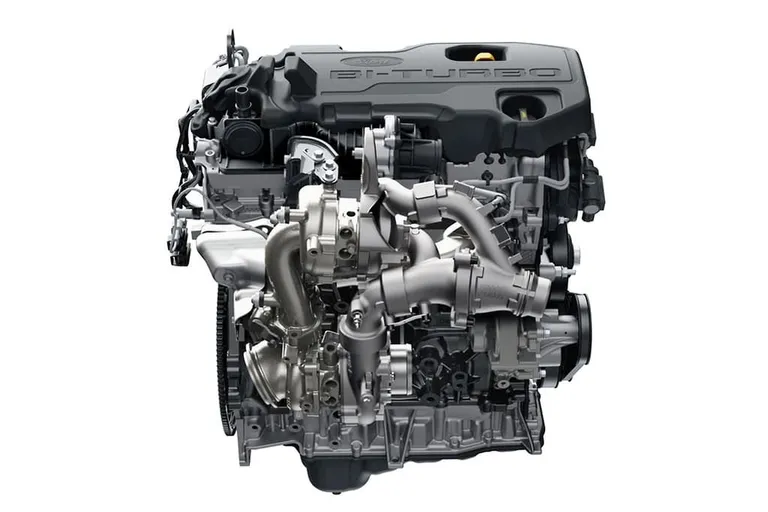
The 2.0L
There is no doubt that the decision on the 2.0L bi-turbo has divided people. On paper, the 2.0L produces more power and more torque than the 3.2, which is no doubt why Ford chose it for the Raptor. Many people still expect that the smaller motor won’t last as long as the bigger one, although this remains to be seen.
I’ve heard that the 2.0L bi-turbo was originally designed for use in the European Ford Transit commercial vehicle and sold for a number of years there prior to being introduced to Australia. Commercial vans have a hard life, so maybe this will turn into a non-issue?
Peak torque is produced in a very similar rev range for both engines (albeit with the new 2.0L pipping the 3.2 with 30 extra Newtons of twisting power). The key difference is where Max Power is produced, which for the 2.0L is somewhere in the vicinity of 3750 RPM, and where for the 3.2L it is at the 3000 RPM mark.
The bi-turbo though has a 10 speed gearbox, which works to keep the engine in its peak torque range. I found that with the extra gears, the 10 speed generally keeps the Raptor in the 1500 to 2500 RPM space, where the 3.2L with the 6 speed uses a bit more of the rev range.
Even when you put the foot down, unless you choose sports mode the 10 speed keeps the engine producing peak torque, which is a very healthy 500Nm. The downside of this is that the 2.0L doesn’t make quite the same noise as the 3.2 because it doesn’t drive the same way through the rev range.
I think that this is likely a key reason that the 2.0L doesn’t get the same reaction from people rather than because of actual performance. In my experience towing with the Raptor, it powered up all of the hills I drove, maintaining the speed limit everywhere I drove, even up long winding hills. In the test, I drove around Sydney, ranging from Narellan to the Blue Mountains, and Newcastle, so I got my share of hills in!
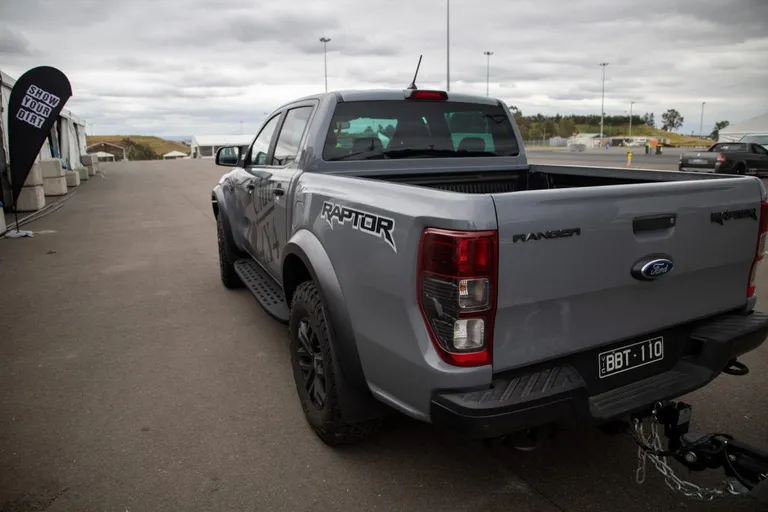
The 140KG towball downweight didn’t negatively affect the stance of the Raptor
Gear shifting remained smooth at all times, I didn’t notice any excess engine noise, and the additional weight didn’t trouble the Raptor in any way at any point of the test.
The other thing with the 10 speed was that it seemed to know what gear to stay in at all times. It didn’t rush to get to the top gear and never felt like some diesels do where you can tell the gear is labouring the engine. It worked to keep the engine where it needed to be at all times. Even the few times up longer hills where it dropped gears felt very considered and deliberate, and that meant it never went from 1500 RPM to 3500RPM in a gear change either!
Cabin noise was minimal – at one point I had a few passengers who all commented on how quiet the ride was. This is thanks to the Acoustic windscreens which I believe are now standard across the range.
Based on my experience, the engine was well matched to the vehicle and delivered plenty of power and torque for the weight towed.
The feel of the Trailer
Regardless of what I’ve towed the T-van with, the truth is at 1,500KG you notice the trailer when you first hitch it on. However, you soon get used to the tow vehicle overcoming the initial inertia and getting the vehicle moving, and before long you get used to the additional weight. The Raptor was no exception. It wasn’t too long before I found myself checking the trailer was still attached because of the ease at which it towed. This was consistent with my experience driving the 3.2L XLT recently.
I did find that I could feel the trailer being pulled by the Raptor over the XLT. If I hit a decent bump, I’d feel the trailer responding to it in the Raptor, but not the XLT. I put this down to the suspension – the XLT has stiffer leaf springs in the rear, where the Raptor has high performance coil springs with Fox shocks.
If you head off-road, the softer coil springs in the rear are amazing, and everyone in our team that has driven the Raptor will talk about how composed it is and how fast you can drive it over difficult terrain. However, this feel is the consequence of having the better off-road bias – you’ll feel the trailer a bit more on-road.
Let me clarify though, that I didn’t find that the additional feel in the trailer was a bad thing, just something different from the stiffer leaf springs.
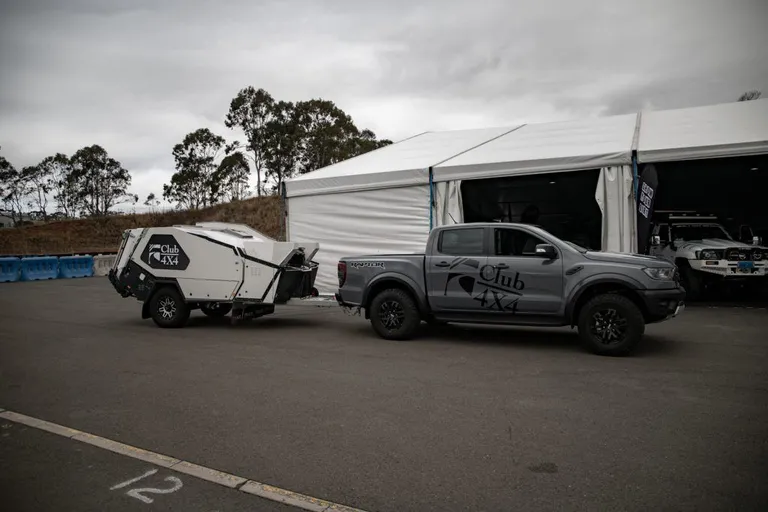
The Raptor at Show Your Dirt
Fuel Economy
In the Raptor, towing 1,500KG, I averaged 11.8L/100KM over the 1000+Km I drove. I was very impressed with this result, because I maintained highway speeds wherever I was legally allowed. With an 80L fuel tank, this gives you a technical range of about 670KM, meaning a planning range of about 600KM.
In the 3.2L I’m pretty sure I was at about 13.0L/100KM, which means you’d be looking at about 550km per tank.
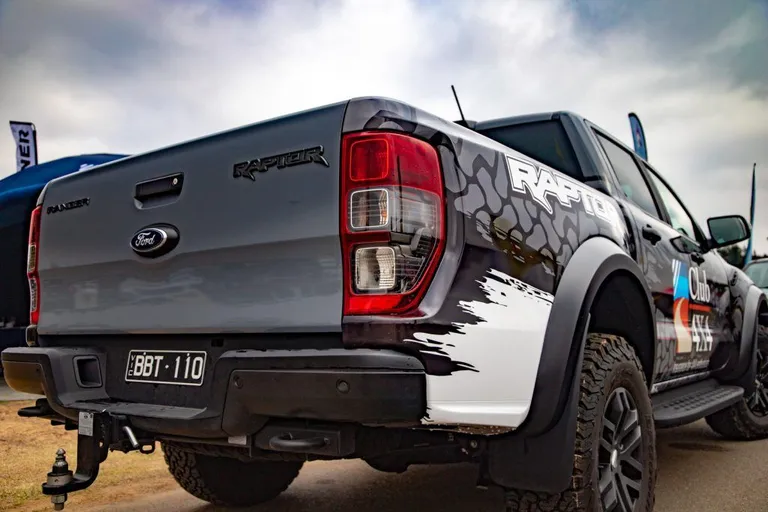
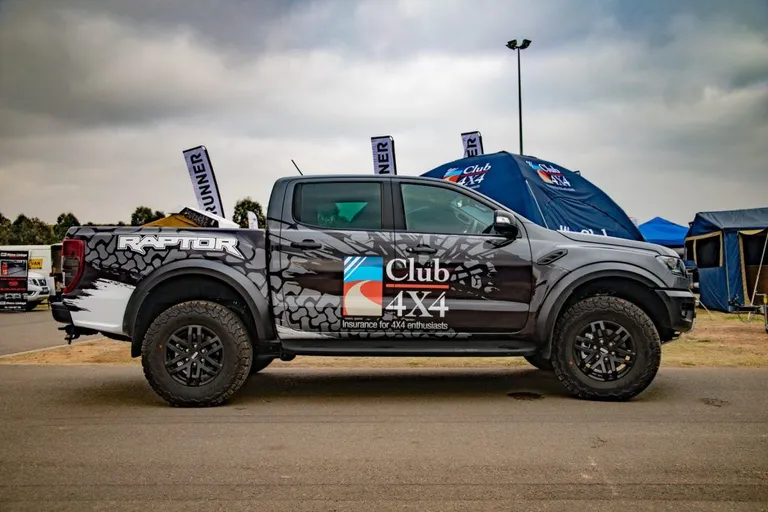
How good does the new Club 4X4 wrap look?
My Verdict
After having driven over 6,000km with the Tvan in the last few months, and over 1,000 km each in the Ford Ranger XLT and now the Raptor as well, I think that the Ranger Raptor is actually a very capable tow vehicle. And so is the Ranger XLT.
So would I take a Raptor over the more traditional leaf sprung utes like the XLT? The honest answer here is that it depends on what you are towing, and what type of travelling you intend to do.
If you intend to get off the beaten track, I’d go for the Raptor any day. It is hugely capable off-road, and while the softer suspension means you will feel the trailer a bit more when on-road, off-road the Raptor is more comfortable than any other ute I’ve driven and you’ll enjoy the benefit of the additional capability vs the standard ute. If you are in this bucket too, chances are that you aren’t going to be towing a behemoth of a trailer or van, so the reduced 2.5T max towing capacity won’t be an issue.
If you intend on sticking to outback highways, then while the Raptor is more than capable of meeting your needs, you’ll probably be that bit more comfortable in a leaf sprung ute like the XLT. And you may appreciate the extra towing capacity as a result.
So to summarise, in my experience I think that the Raptor is a very capable tow vehicle. The 2.0L was different to the 3.2L but performed very well and was well suited to the vehicle, especially with the 10 speed gearbox. If you are looking for off-road capability, I think that the Raptor is hard to go past, although if on-road is going to be your bread and butter, you’ll find a leaf sprung ute like the XLT slightly more comfortable on-road due to the stiffer back end.
We’ve got the Ranger Raptor for the next 18 months. We’ll continue to provide updates on how it performs, how it handles the huge km’s we put on it, and how you might be able to make the best Off-road ute produced by a manufacturer even better.
Aiden


